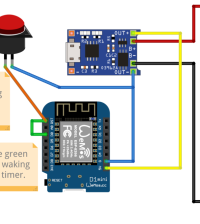- How to Adjust X and Y Axis Scale in Arduino Serial Plotter (No Extra Software Needed)Posted 2 months ago
- Elettronici Entusiasti: Inspiring Makers at Maker Faire Rome 2024Posted 2 months ago
- makeITcircular 2024 content launched – Part of Maker Faire Rome 2024Posted 5 months ago
- Application For Maker Faire Rome 2024: Deadline June 20thPosted 6 months ago
- Building a 3D Digital Clock with ArduinoPosted 11 months ago
- Creating a controller for Minecraft with realistic body movements using ArduinoPosted 12 months ago
- Snowflake with ArduinoPosted 12 months ago
- Holographic Christmas TreePosted 12 months ago
- Segstick: Build Your Own Self-Balancing Vehicle in Just 2 Days with ArduinoPosted 1 year ago
- ZSWatch: An Open-Source Smartwatch Project Based on the Zephyr Operating SystemPosted 1 year ago
Raspberry Pi Sense HAT: raspberry goes to space!

ESA Astronaut Tim Peake will embark on his six-month mission, Principia. He’ll be conducting scientific experiments and engaging with young people in educational outreach activities. As part of this, he’s taking up two Raspberry Pi computers in purpose-built flight cases, each with camera modules and sensor boards attached. These will be running Python programs written by the Astro Pi competition winners.
The flight case
The Raspberry Pis must be mounted using a Bogen arm on the space station, like the ones used to dock crew laptops. They also must be certified as completely safe for the Soyuz rocket, which will take it to the ISS, and then for continued use in space. The Raspberry Pi team has been working closely with the ESA and the UK Space Agency to get the flight safety certificate.

The hardware
The flight cases will each contain a Raspberry Pi, a Sense HAT, a real-time clock, and a camera module. The Sense HAT is an add-on board for the Pi created especially for the Astro Pi mission by the Foundation’s engineering team. It packs an 8×8 full-color LED display; a mini joystick; a set of sensors for temperature, humidity, and pressure; an accelerometer; a gyroscope; and a magnetometer.
The Sense HAT is now available to buy, and it’s bound to be used in a number of amazing projects and experiments here on Earth.You can buy from the Raspberry Pi Swag Store in the UK, from Adafruit in the US, or from any other Pi accessory retailer around the world.
Open source software listing, code snippets and a video showing the Astro Pi working: A look at the Raspberry Pi Sense HAT | Opensource.com















